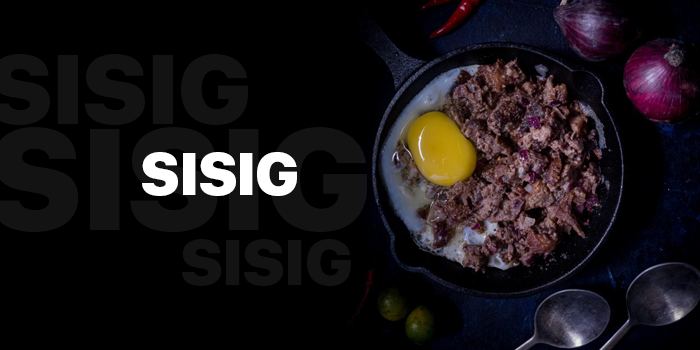
Filipinos have a penchant for the extravagant. From formal occasions like fiestas, birthdays, anniversaries and baptisms to mundane ones like monthsaries and “unang sahod,” expect a party, big or small, to mark the occasion. And of course, with every Filipino party comes a deluge of food.
At the mention of popular Filipino dishes (Pancit, Lechon, Sisig. Halo-Halo etc.), mouths might already be watering. But for the diabetic, it is utterly horrifying to see temptation after temptation go past your eyes.
Fret not! You don’t need to just avoid these foods: you can find alternatives fit for your diabetes. Here are 5 Filipino Foods you need to stray away from as a diabetic, and 5 Foods to replace them!
1. White Rice

Let’s begin with the staple of Filipino Food: White Rice. White Rice is rich with carbohydrates, which can boost sugar levels in the body if it’s not processed. One of the gripes of Filipino diabetics is the fact that they can’t eat rice anymore. But that not necessarily true:
ALTERNATIVE: Brown, Black or Red Rice
White Rice is a refined grain, milled to remove the bran and the germ to leave the carbohydrate-rich endosperm. Brown Rice (and all the other rice mentioned) is whole grain, with the high-fiber bran and nutritious germ intact. Whole grains contain complex carbohydrates that take the body longer to process, which both keeps the stomach full and releases energy more slowly compared to white rice. Brown Rice has fiber and antioxidants, something the “empty” white rice, only rich in carbs, lacks completely.
2. Pancit Canton

Pancit is a staple of any Filipino party, and Pancit Canton has become so ubiquitous that an instant-noodle version has cropped up to become the poor man’s cheap “ulam.” While the instant version is an automatic no for a host of reasons, the traditional pancit canton shouldn’t be taken lightly, either. The noodles high in carbs and the dish high in salt, diabetics can expect an uptick in both their blood sugar and blood pressure levels. As a healthier option:
ALTERNATIVE: Pancit Bihon Guisado
Nothing much has changed from the dish apart from the noodles, now made with thinner rice noodles. It has average carbs and low fat. Recently, this proves to be the pancit most often served in parties, so caution and moderation has to be practiced when eating this beloved dish.
3. Kakanin

Puto, Kutsinta, Biko, Bibingkang Malagkit… kakanin is the Filipino’s dessert (and merienda). Unfortunately, Kakanins are functionally the same as rice as far as its effect on the body. With a high carbohydrate food, now mixed with sugars, a diabetic might squirm at this luscious temptation. But, if you’re looking to sate your sweet tooth…
ALTERNATIVE: Fruits
Mangoes, Oranges, Bananas… these fruits are also staple in Filipino households, too. Far from the sweet tempters like cake and our kakanins, these fruits have less refined sugar and higher fiber. Whilst still in moderation, these fruits provide a far better alternative to that sugar craving we’re having.
4. Sisig

A relatively modern Filipino dish (its modern version’s inventor dying only in the last decade), Sisig was born out of necessity and resourcefulness. Using the pig’s head and snout as the main ingredient, Sisig turned the undesirable meat into a national craze.
But meat is still meat, and studies show that red meat puts people at risk of diabetes compared to fish and other white meats. Lucky for us, Sisig has developed many different variations, including our suggested alternative:
ALTERNATIVE: TOKWANG SISIG
Also known as Tofu Sisig, it replaces the pork meat with something more plant-based. Tofu is generally seen as a healthier option for diabetics. Consider getting one instead of the original version for that Filipino Dinner you’re having later.
5. Lechon

And the granddaddy of all Filipino dishes in parties (in reality, this isn’t as regular as foreigners assume it to be): Lechon. The roasted pig is utterly mouth-watering, but with fats galore that is bound to raise blood pressure levels, steering away from this dish is necessary, albeit unwillingly.
ALTERNATIVE: Non-Fried Lechon Kawali
Granted, it is still Lechon, but in this case, the part of the pig used and the manner of cooking it can be controlled. Broiling the pork belly instead of frying it uses the oil already inside the meat, having less oil in the dish. It’s healthier than it’s roasted counterpart for sure, but consider eating less that what you hope for (compared to none at all)
SOMETHING TO NOTE…
As with all things: everything must be taken in moderation. Brown rice is known to have antinutrients and trace amounts of arsenic, Fruits still contain sugars, and lechon kawali is still cooked with the meat advisably avoided to protect you from any complications to your condition. While these alternatives do give you a chance to eat things you otherwise can’t, in order to truly be safe from the dangers of diabetes, always take these foods in moderation.
Happy eating, everyone!


